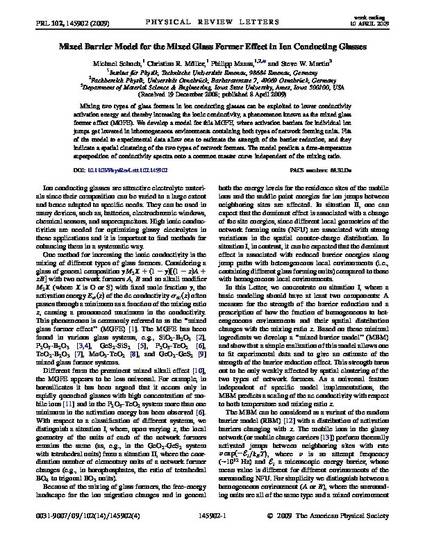
Article
Mixed Barrier Model for the Mixed Glass Former Effect in Ion Conducting Glasses
Physical review Letters
Document Type
Article
Disciplines
Publication Date
4-8-2009
DOI
10.1103/PhysRevLett.102.145902
Abstract
Mixing two types of glass formers in ion conducting glasses can be exploited to lower conductivity activation energy and thereby increasing the ionic conductivity, a phenomenon known as the mixed glass former effect (MGFE). We develop a model for this MGFE, where activation barriers for individual ion jumps get lowered in inhomogeneous environments containing both types of network forming units. Fits of the model to experimental data allow one to estimate the strength of the barrier reduction, and they indicate a spatial clustering of the two types of network formers. The model predicts a time-temperature superposition of conductivity spectra onto a common master curve independent of the mixing ratio.
Copyright Owner
American Physical Society
Copyright Date
2009
Language
en
File Format
application/pdf
Citation Information
Michael Schuch, Christian R. Müller, Philipp Maass and Steve W. Martin. "Mixed Barrier Model for the Mixed Glass Former Effect in Ion Conducting Glasses" Physical review Letters Vol. 102 Iss. 14 (2009) p. 145902 Available at: http://works.bepress.com/steve_martin/8/

This article is from Physical Review Letters 102 (2009): 145902. Posted with permission.